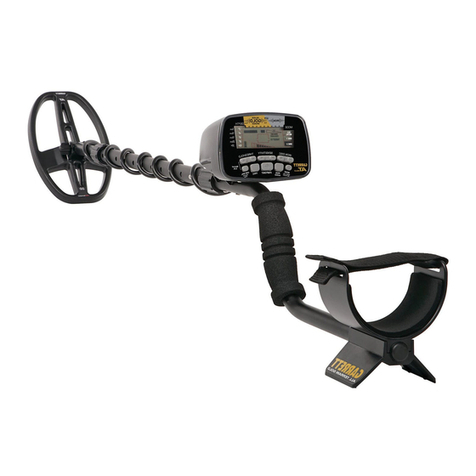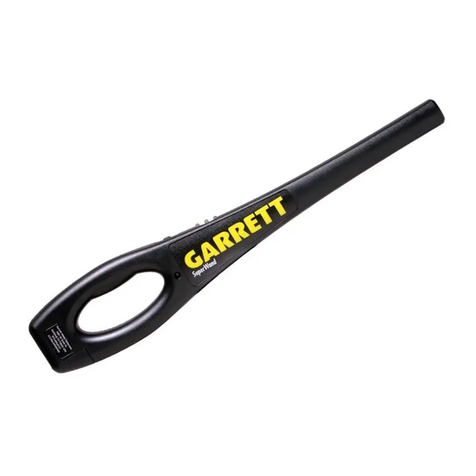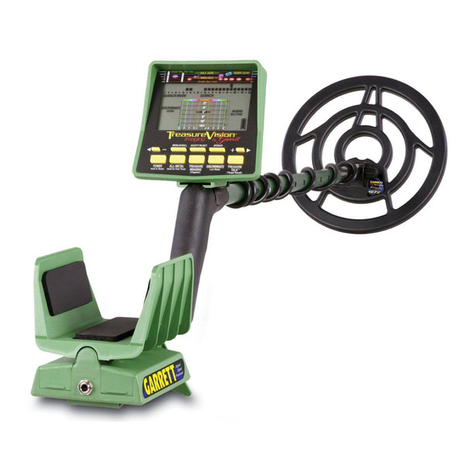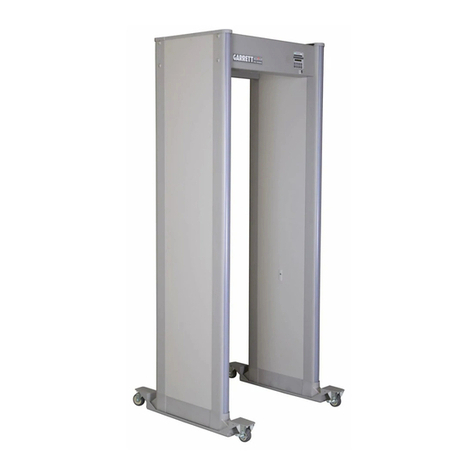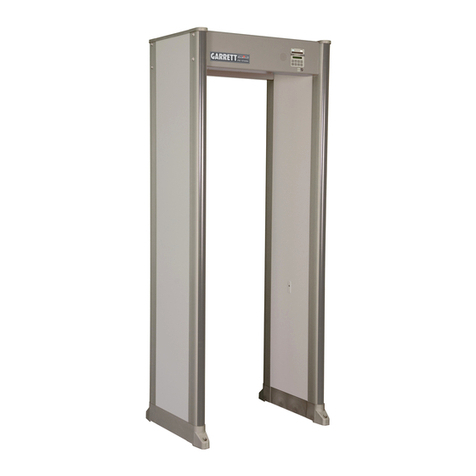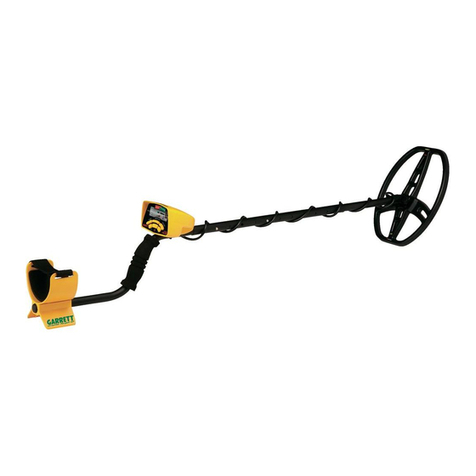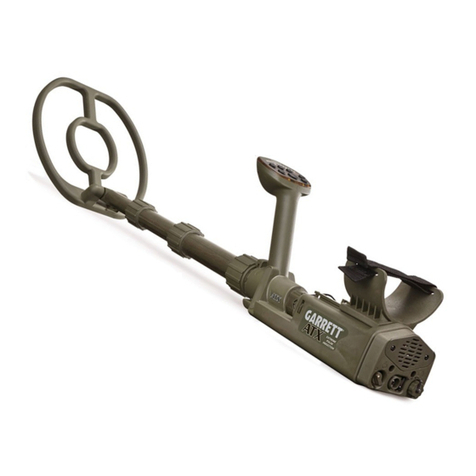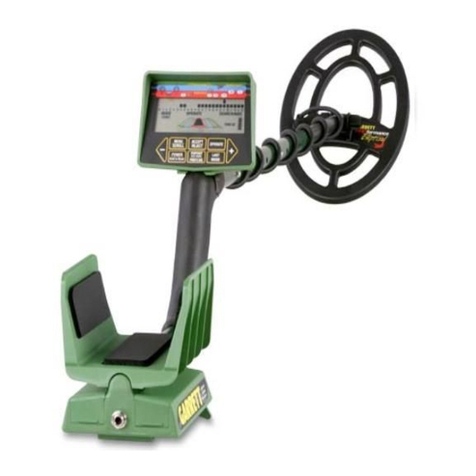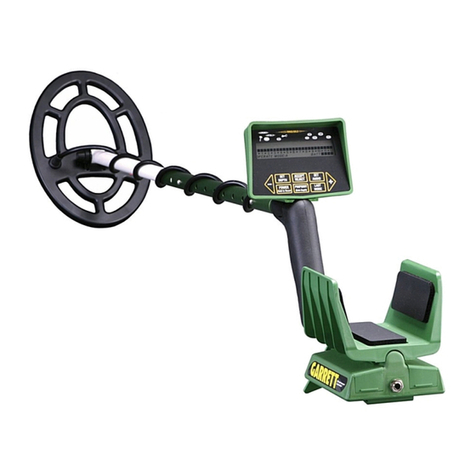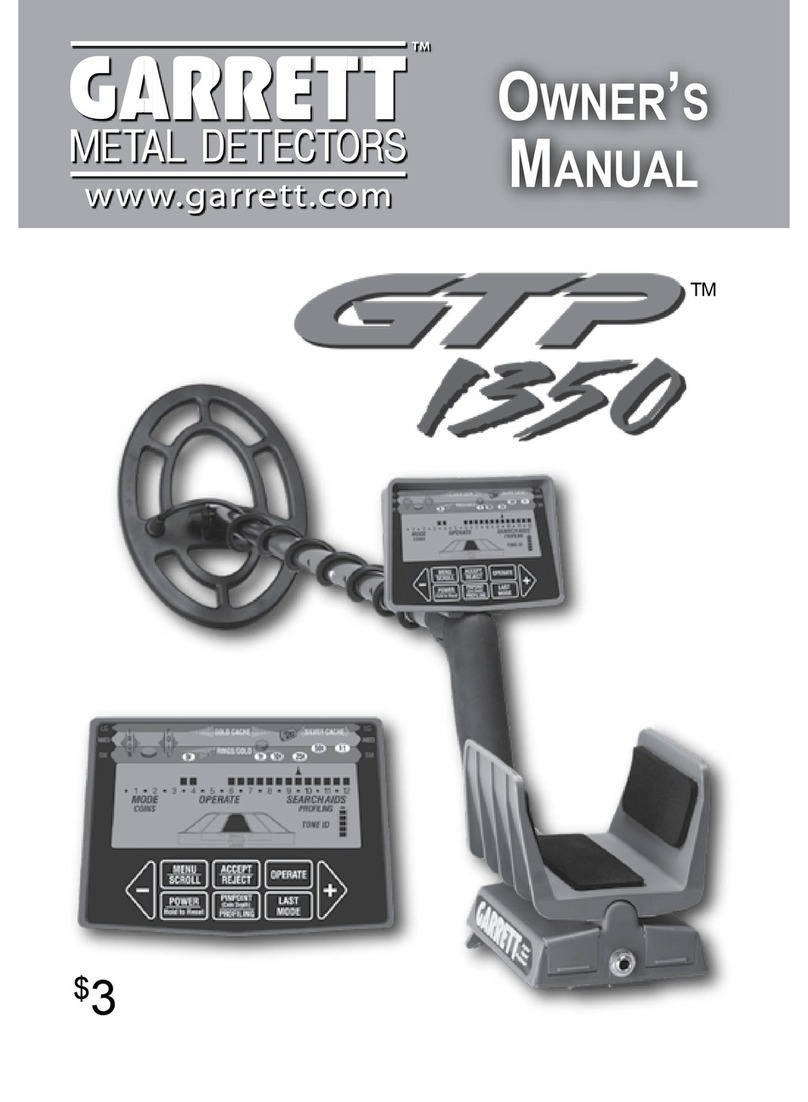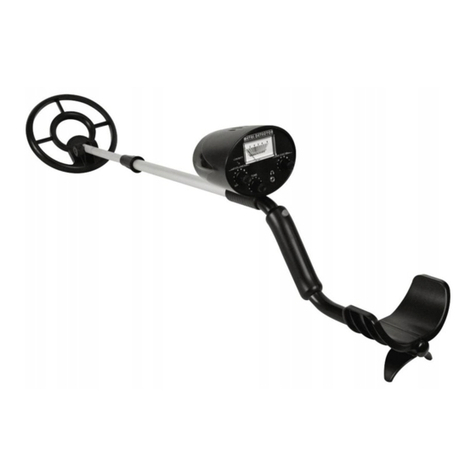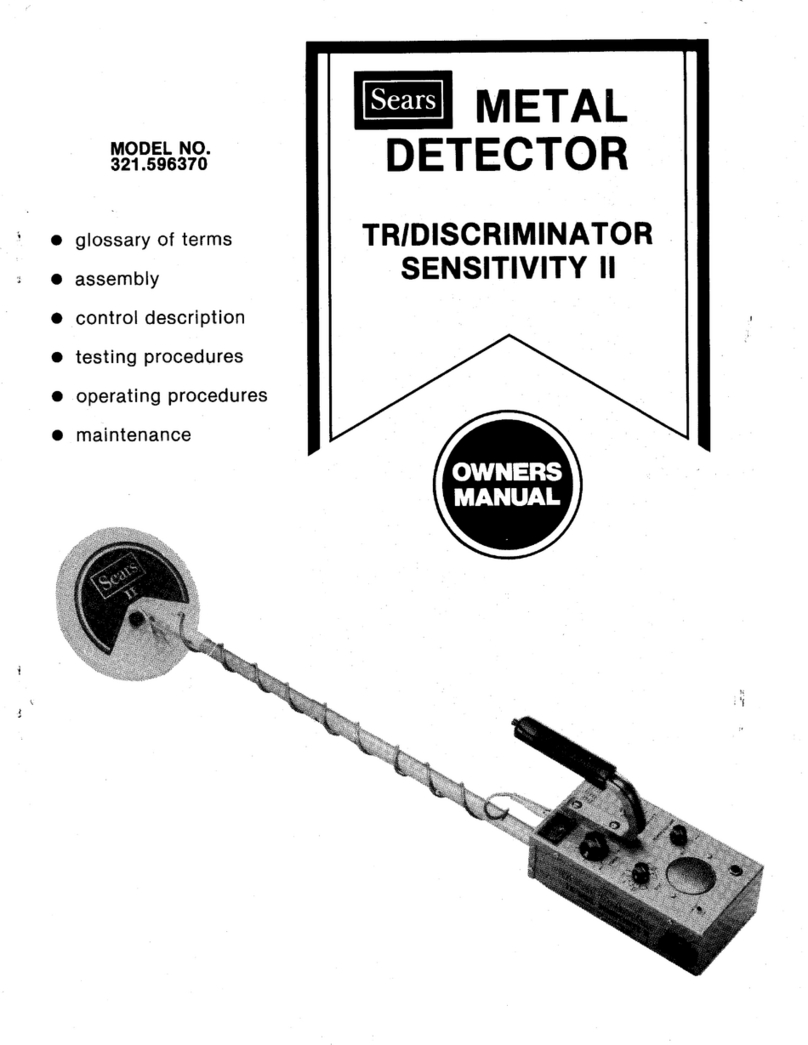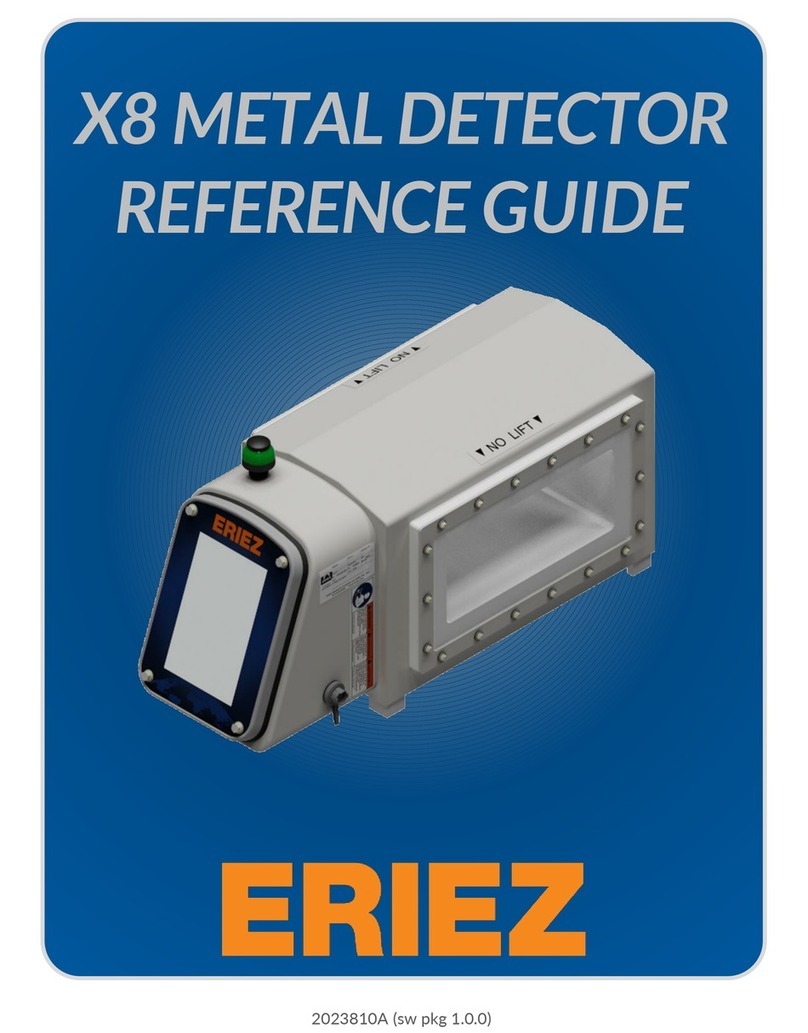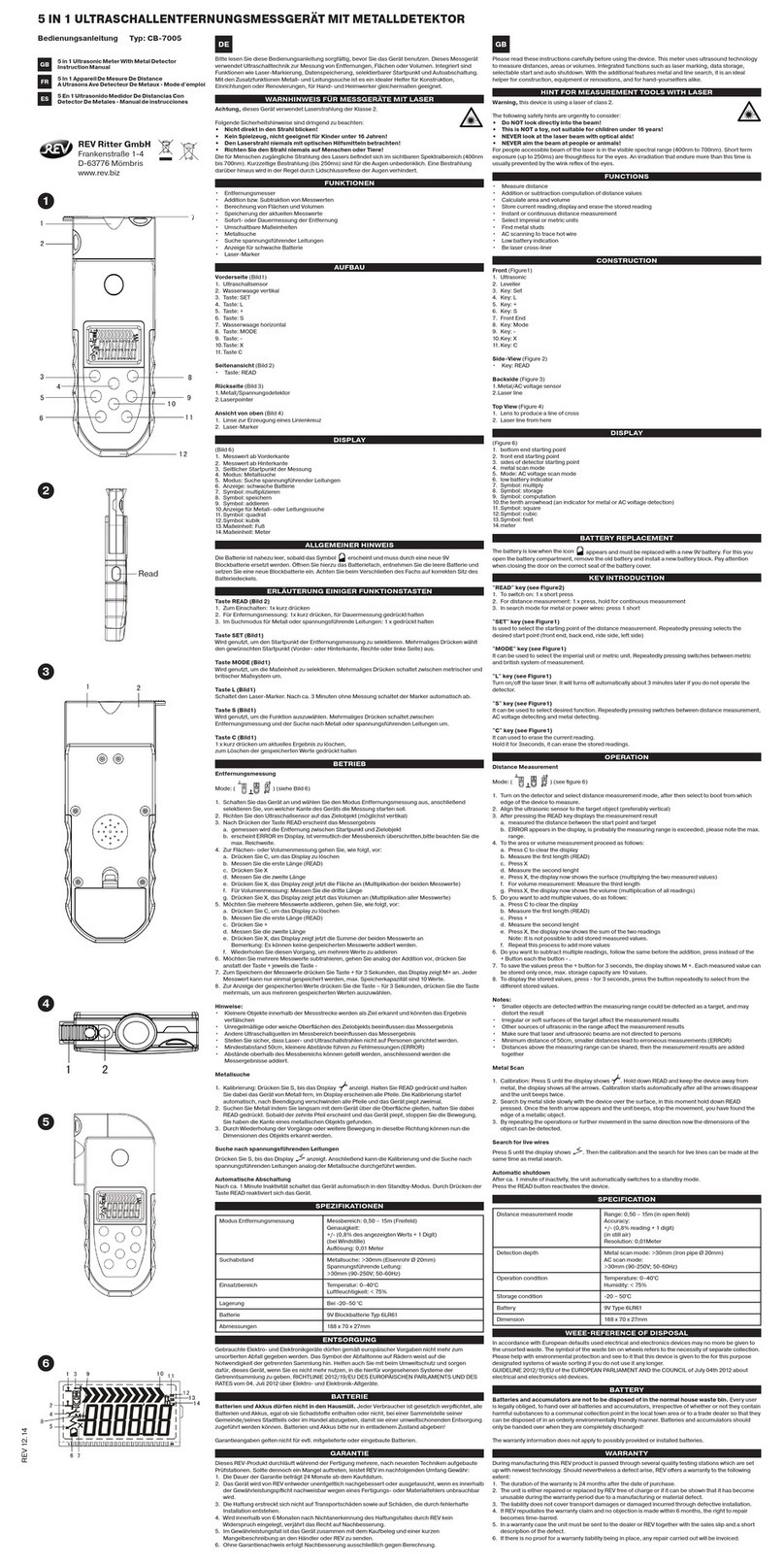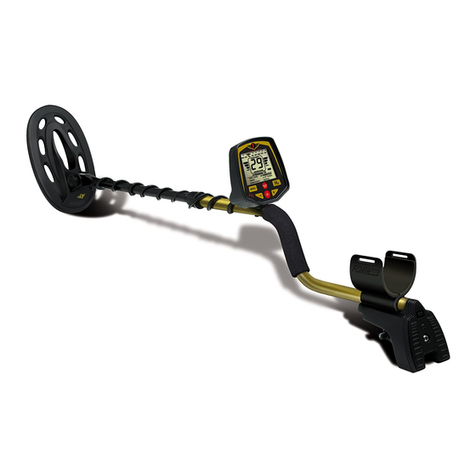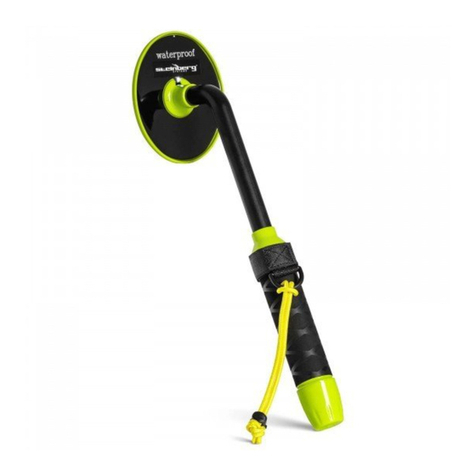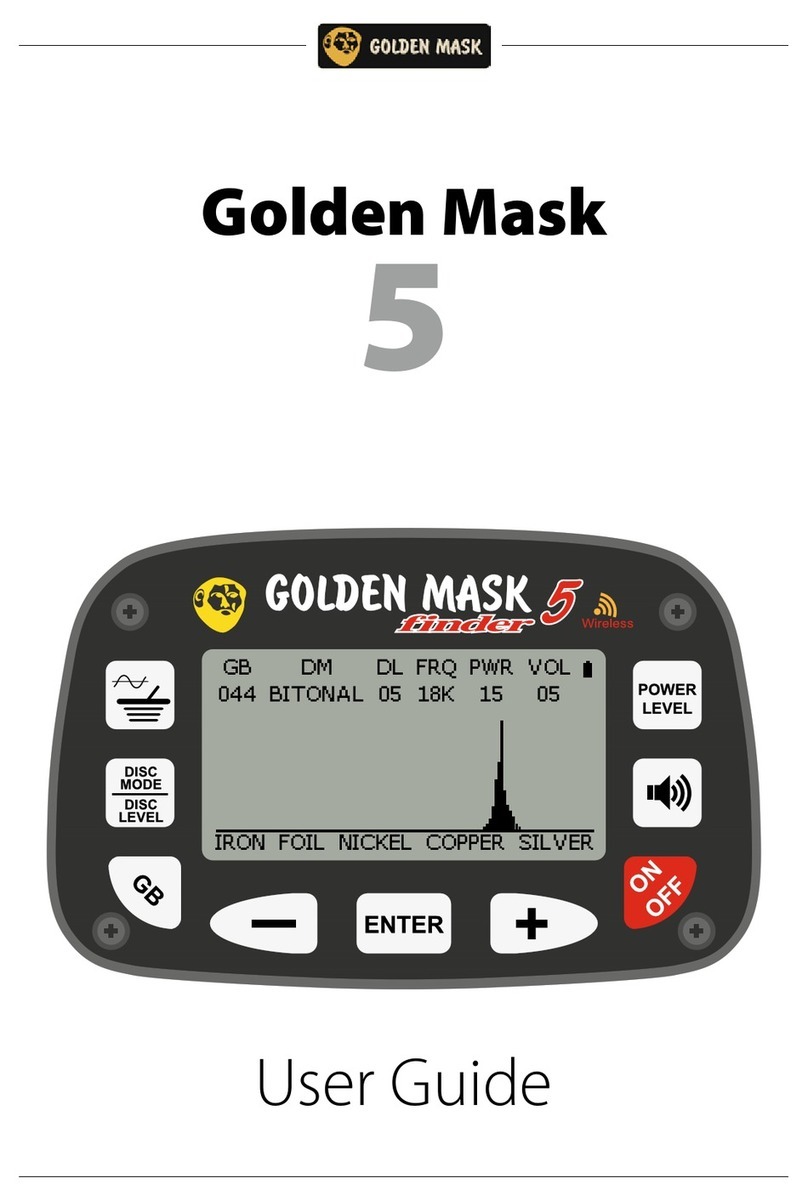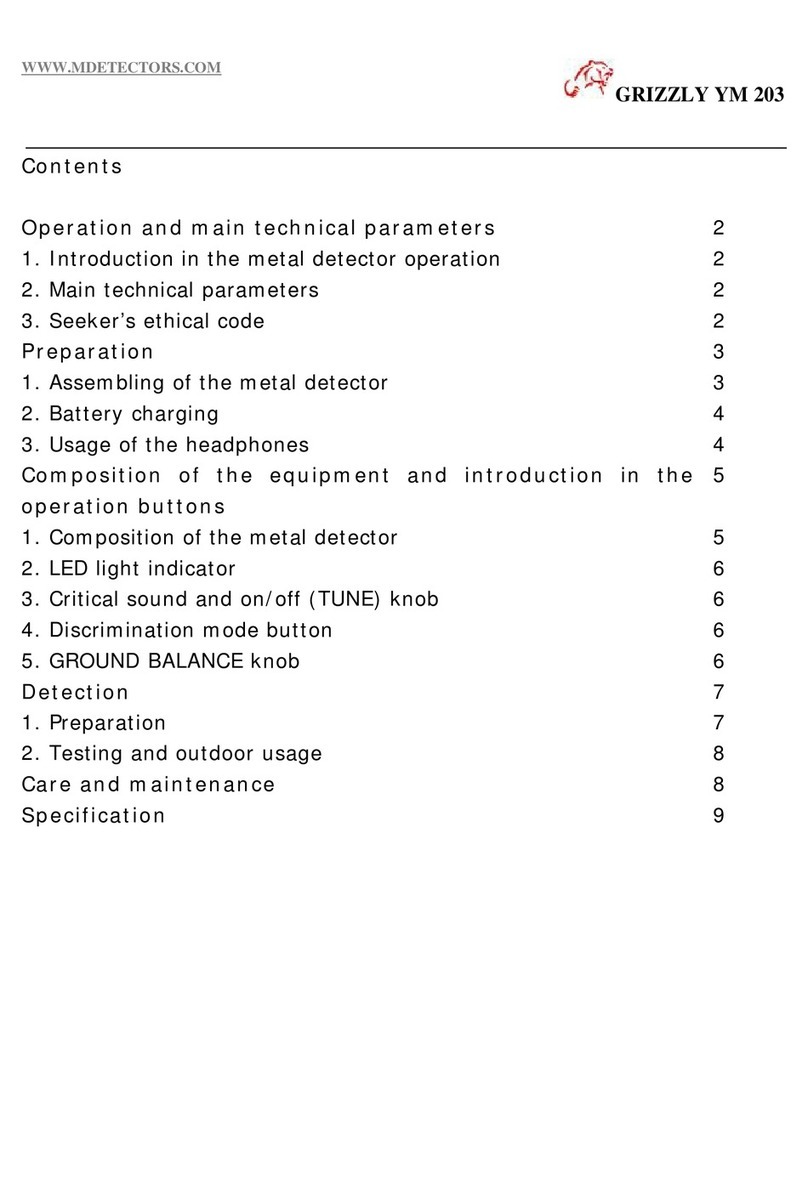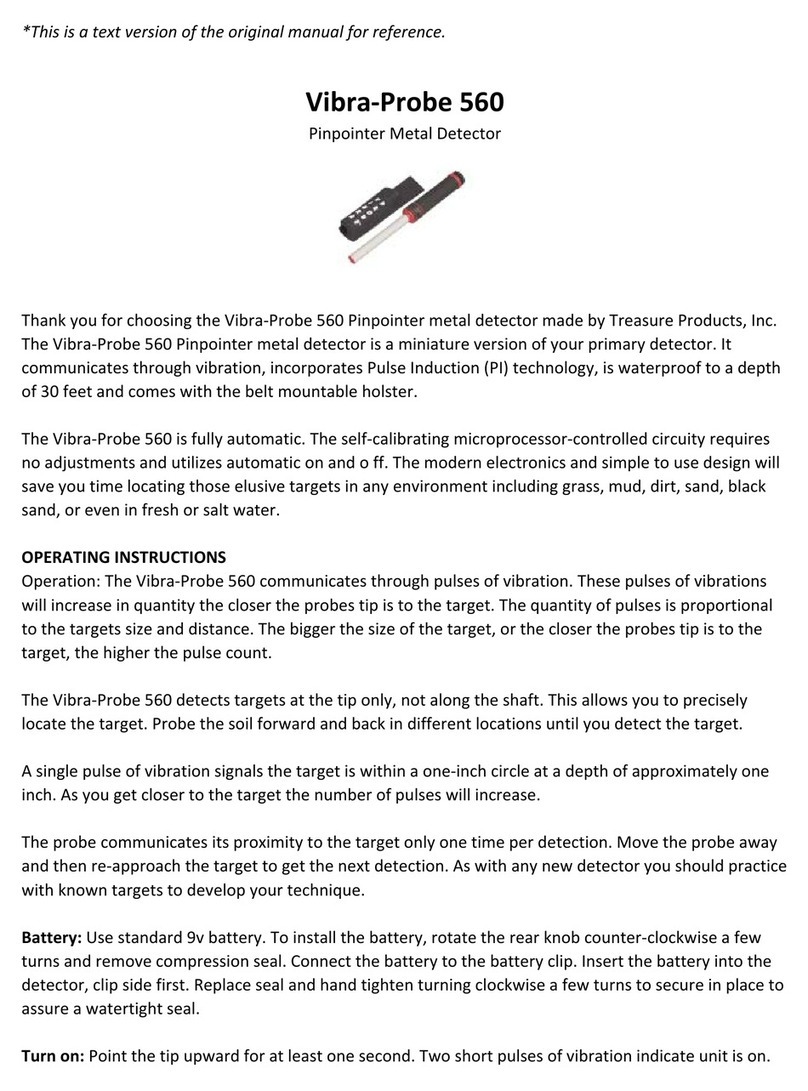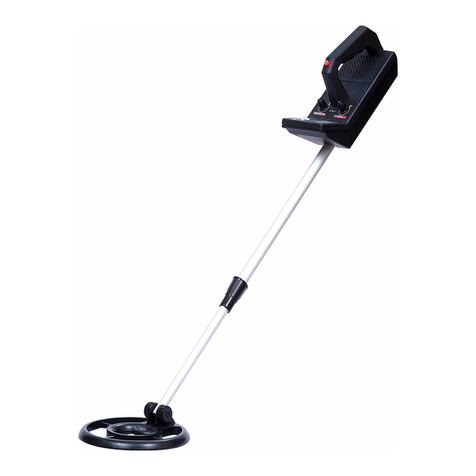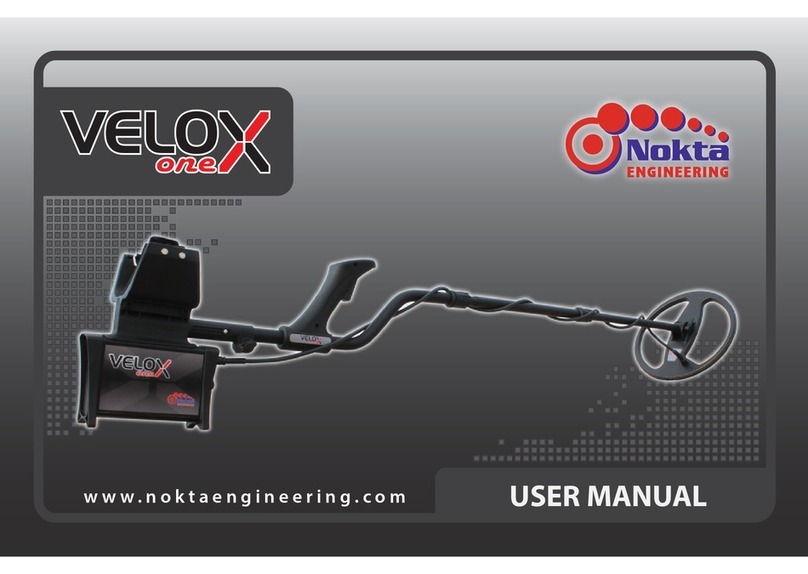
10 Garrett Metal Detectors ACE 400i™11
• RELICS Mode—designed to eliminate small iron pieces,
while detecting good targets in the lower conductivity range,
such as lead, brass and bronze.
• COINS Mode—designed to find most types of coins
and to eliminate common trash items such as iron and foil.
Some desirable items that respond the same as foil may be
missed. Some digging of junk targets is to be expected, such
as aluminum cans.
SENSITIVITY
SENSITIVITY
Button
Sensitivity
Indicator
Use the (+) or (–) SENSITIVITY buttons to step through the
eight (8) levels. Use increased sensitivity when searching for
very small or very deep targets. Use lower sensitivity levels
when the detector is behaving erratically (due to excessive
metallic trash, highly mineralized soils, electrical interference
or the presence of other metal detectors) and the erratic
operation cannot be resolved with discrimination or by
changing frequency.
NOTCH DISCRIMINATION
Notch Discrimination—Use the DISCRIM (+) or (–) buttons
in conjunction with the ELIM (
/X )
button to eliminate trash
objects from detection such as foil or pull-tabs.
The ACE 400ihas 12 pixels or "notches" of discrimination,
shown on the lower scale. Any combination of these pixels can
be switched on or off based upon your preference. There are
two primary methods for modifying the Notch Discrimination
Pattern to reject a specific type of trash or unwanted item.
For the first method use the (+) or (-) DISCRIM buttons
to move the Target ID cursor to the left or right. Next, press
the (
/X )
button to eliminate or activate the pixel located
on the Lower Scale, directly below the Target ID cursor. (See
illustrations on next page.)
The second method of modifying the Notch Discrimination
pattern uses only the (
/X )
button. When an unwanted target
is audibly detected, simply push the (
/X )
button to create
a notch at that Target ID Cursor. The next time this item is
encountered, it will not produce an audible signal.
Tip: Notch Discrimination can also be used to find specific
metal items. For example, if an earring has been lost, scan the
matching earring in ZERO-DISC mode and note its Target ID
cursor. Then use the DISCRIM and (
/X )
buttons to switch off
all the pixels except the one for the earring and an additional
pixel on either side to account for some ID variations.
